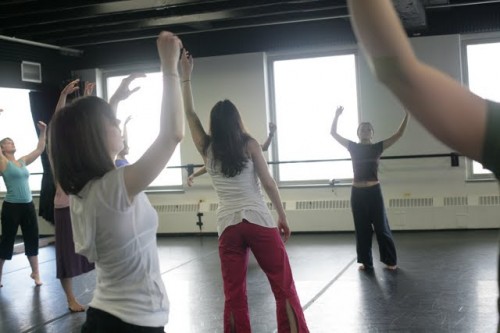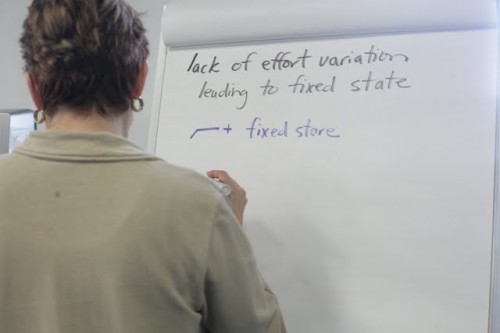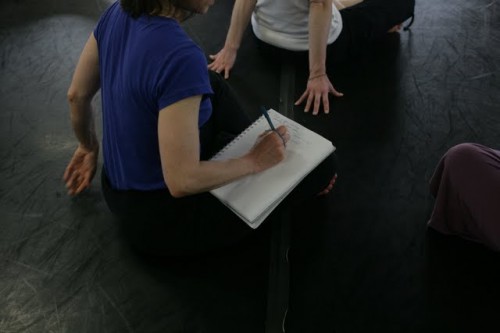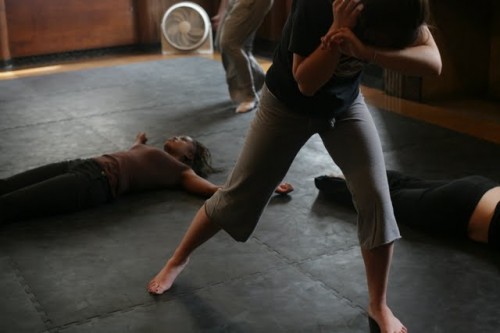
GL-CMA: Graduate Laban Certificate in Movement Analysis
Through the Department of Creative Arts Therapies (DCAT), we have the opportunity to partake in the certification programs offered as well. One of which is the Graduate Laban Certificate in Movement Analysis (GL-CMA). Through this program, anyone can learn to apply Rudolf Laban’s theory of movement analysis to body/mind therapies, dance, theatre, education, performance, athletics and rehabilitation. In this integrated graduate-level curriculum, you’ll study Laban’s taxonomy in depth, hone your observation skills and earn certified movement analyst (GL-CMA) credentials. Weekend classes make this program ideal for working adult learners, and the entire program takes a total of 14 months to complete. Luckily, I had the opportunity to interview a couple current students within the GL-CMA program and they had a lot to say about their experience thus far!
Whitney Moncrief
Assistant Professor of Dance at Western Michigan University
1. What drew you to the GL-CMA certificate program?
I initially had two significant interests in the program. 1.) I wanted to inform my teaching practice in the modern and jazz dance genres as a professor of dance in higher education. I felt that I needed to expand my language to meet the level of physical knowledge I held. I also knew that in addition to the language, I would also gain a better understanding of my own body and find new and creative outlets for myself and for my students. 2.) After sitting in on an Introduction to Bartenieff Fundamentals course at the university I currently teach, I became aware of my interest with the theories of Irmgard Bartenieff and Rudolf Laban. I also realized that this course was something that I wanted to teach, and then use the fundamentals in my technique courses to help my students deepen their understanding of movement, injury prevention, and to simply learn more about themselves within the context of movement.
2. How has the process been for you so far?
The learning process has been both rewarding and challenging. I have found that I definitely have a better understanding of topics once we embody the discussion ideas physically. I also found that I need time to reflect after a week or weekend residency to allow for material to sink in. There are moments of feeling overwhelmed and then after two or three days I can look back with a clear mind and feel clarity in regard to the research.
3. How has this program informed your current work?
I feel much more confident with language and the ability to use different approaches in my teaching practice. I can be more articulate with my explanations and I’m finding that my students are also absorbing the language and have a better understanding of themselves as individual movers.
4. How do you plan to implement GL-CMA into your future?
I am already using this new information in my teaching practice and I look forward to having the opportunity to teach Laban in my future. I feel that my students will benefit from having the same instructor for Bartenieff, Laban, and movement technique classes so that they can incorporate these theories into practice cohesively.
5. Anything else you would like to add?
I’m really enjoying the program and the faculty.
Erica Barnes
Founder of the Lost Geneva Project
1. What drew you to the GL-CMA certificate program?
I had been stalking the GL-CMA program at Columbia College Chicago for a few years. Last December I finally felt brave enough to dive in and apply to the program. I hold a BA in Theatre Arts with a concentration in Directing and first encountered Laban work in my undergraduate Movement for Actors classes. Most of my experience was with Laban’s Effort category, specifically his “Action Drives.” Effort lends itself to actors as the vocabulary helps movers move from “mood to mood.”
When I began the program, I learned that Effort was only one of the many categories of Laban’s taxonomy and have since become very interested in learning how to apply his other movement analysis tools to theatre.
2. How has the process been for you so far?
The process so far has been truly life-changing. While I do consider myself a strong mover, I do not have a dance background so I had a few mental blocks in the beginning in trying to “keep up” with my classmates. But it turns out we all come from incredibly different backgrounds and GL-CMA is meant to help you talk about movement within a common vocabulary despite your movement history and ability.
I can feel a difference in the organization of my own body. Embodying the movement is the best way to learn to talk about the material and I can sense that I am more in touch with my breath, I have better alignment, and I feel really connected to my scapulae. I’ve never been so excited about scapulae. I want to shout from the rooftops how more connection to our scapulae would make us all better humans. (I have no idea if this is true, but it does feel REALLY good.)
3. How has this program informed your current work?
Over the summer I directed a play called ‘The Penelopiad’ by Margaret Atwood for the Chicago Fringe Festival. We used Bartenieff exercises, a cornerstone of the GL-CMA program, as well as the Effort vocabulary to build sections of the show. We have been invited to remount the show this winter at the Rhino Fest and at the Poetry Foundation.
I know the GL-CMA program is helping me create a common vocabulary in my rehearsal rooms and I’m excited to see how I can continue to use other aspects of the program to not only quickly unite the actors as a group—but to guide actors to find character through movement.
4. How do you plan to implement GL-CMA into your future?
As I mentioned above, I’m interested in practicing GL-CMA in my rehearsal rooms for shows I direct. I’m also incredibly interested in keeping up my own Body Work practice as I feel really healthy and alive in this program.
An unexpected result of the program is how much I really enjoy guiding other individuals in the body based work of Bartenieff’s exercises. I’m not entirely sure if I know how I would implement this work in my future, but I do really enjoy it.
5. Anything else you would like to add?
The GL-CMA program is both physically and mentally demanding. I’ve never felt so simultaneously drained and energized as I have with this program. I get a real thrill out of the challenge of the program. Some of this work does not come easily for me and while the perfectionist in me finds this incredibly frustrating at times, the curious scholar in me is always eager to jump back into the lab to see what I discover next. I find it very exciting.




